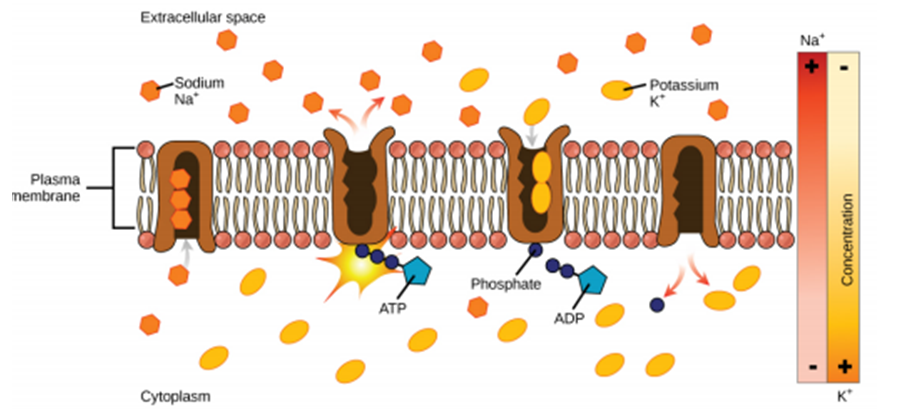In the transport model shown below, what is the exchange rate of Na+ for K+?

a. They are traded evenly across the membrane.
b. Two Na+ are exchanged for every single K+.
c. Three Na+ are exchanged for each two K+.
d. This model is not transporting the ions at all.
c. Three Na+ are exchanged for each two K+.
You might also like to view...
A hydrocarbon skeleton is covalently bonded to an amino group at one end and a carboxyl group at the other end. When placed in water this molecule would function _____
A) only as an acid because of the carboxyl group B) only as a base because of the amino group C) as an acid and a base D) as neither an acid nor a base E) It is impossible to determine how it would function, based on the provided information.
While the organism that resulted in the Irish potato famine of 1845–1847 had long been present, environmental conditions that occurred during this period resulted in the destructive explosion of disease. Indicate what those environmental conditions were and why they resulted in a major disease outbreak.
What will be an ideal response?
Which factor may result in the actual carrying capacity of our planet being lower than initially calculated?
A) The average American uses more resources than someone from another country. B) Modern food production relies on nonrenewable resources. C) NPP has been decreasing. D) The human population is growing much faster than was previously thought.
Mammals belong to a synapsid clade called ______________.
A. placoderms B. ostracoderms C. cloacae D. therapsids E. placentals